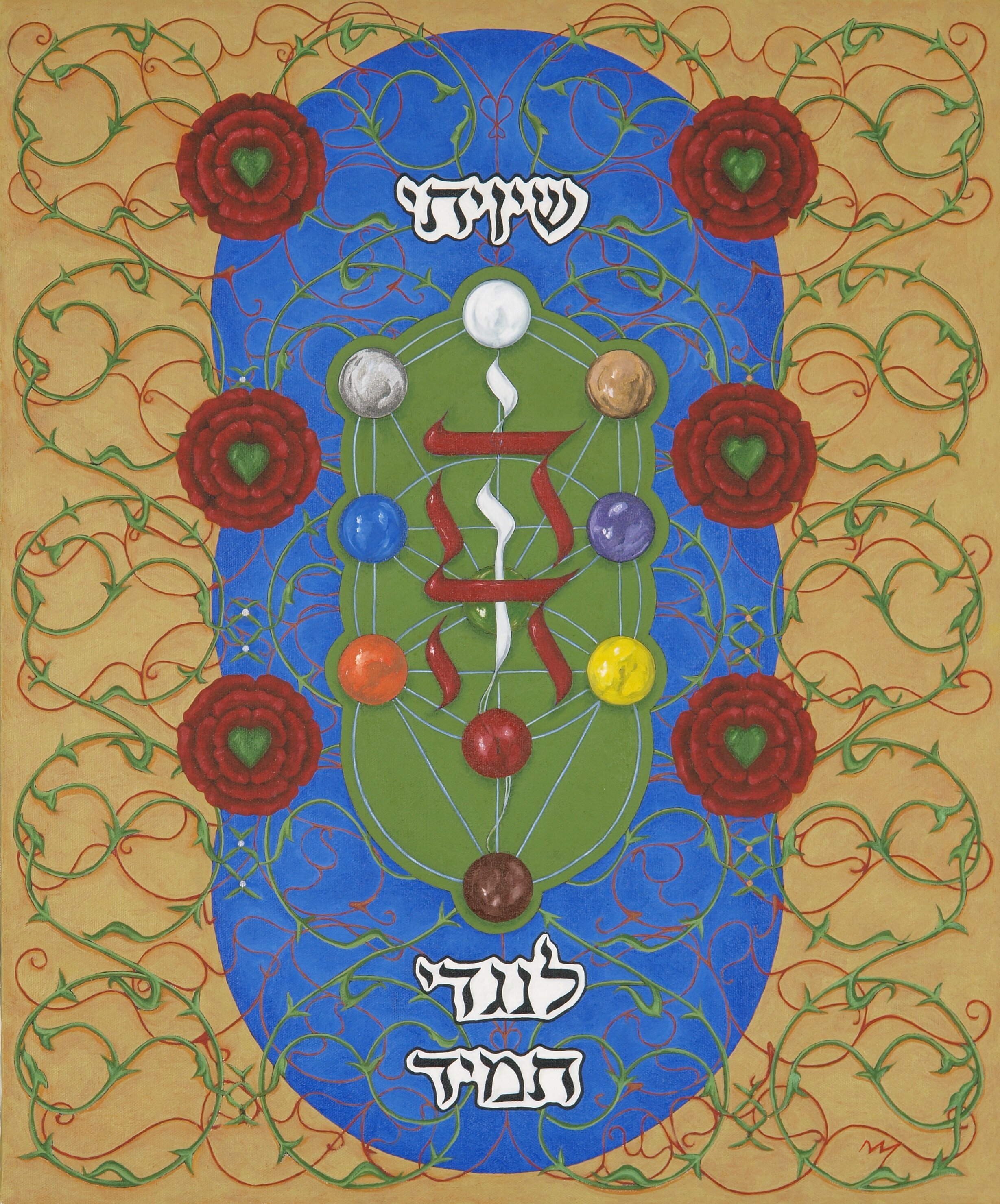
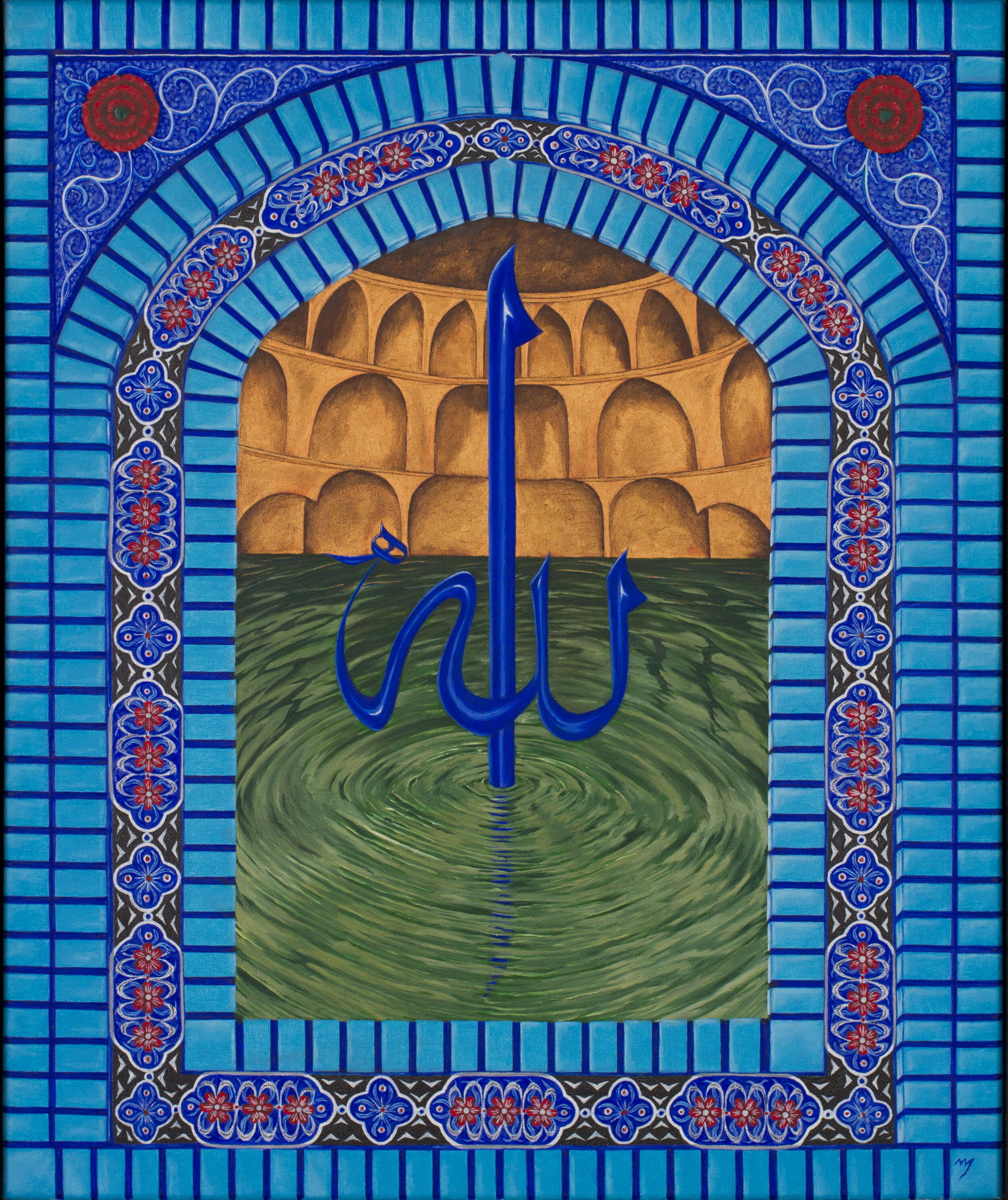
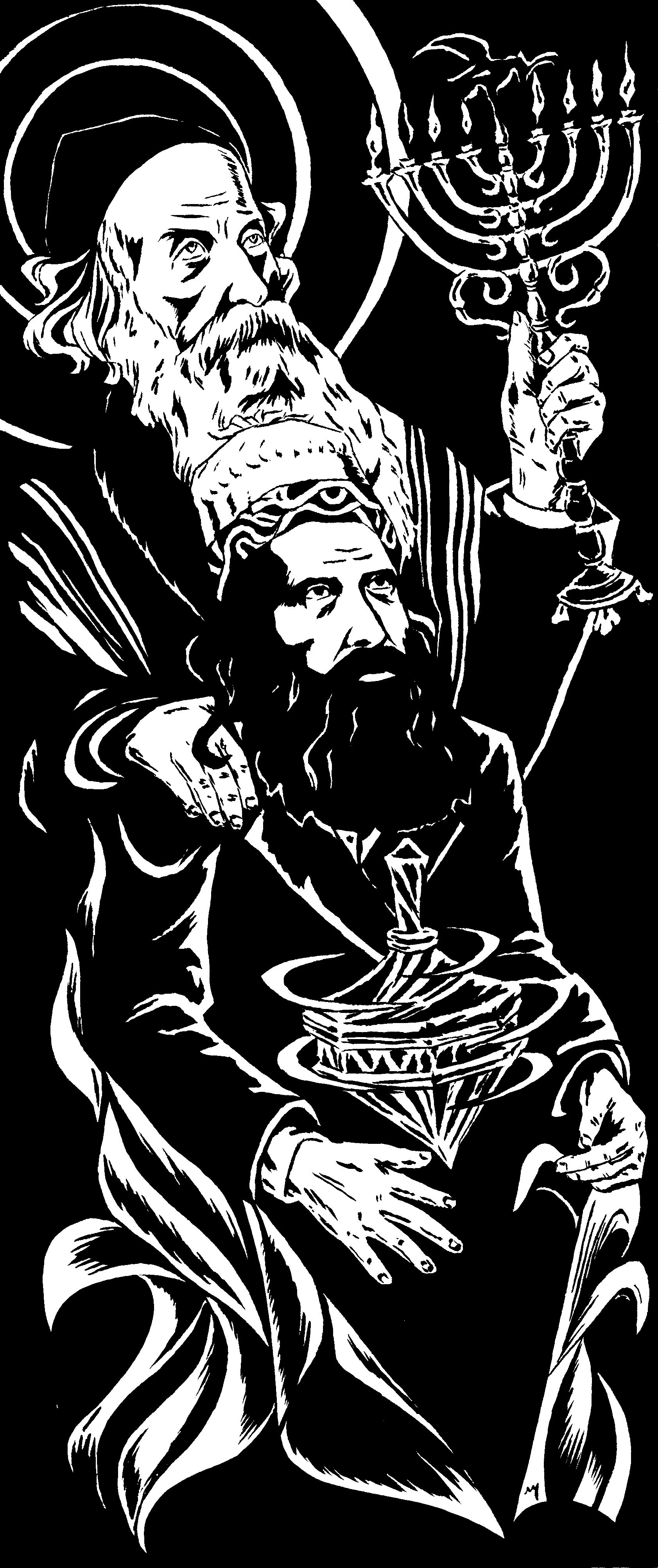
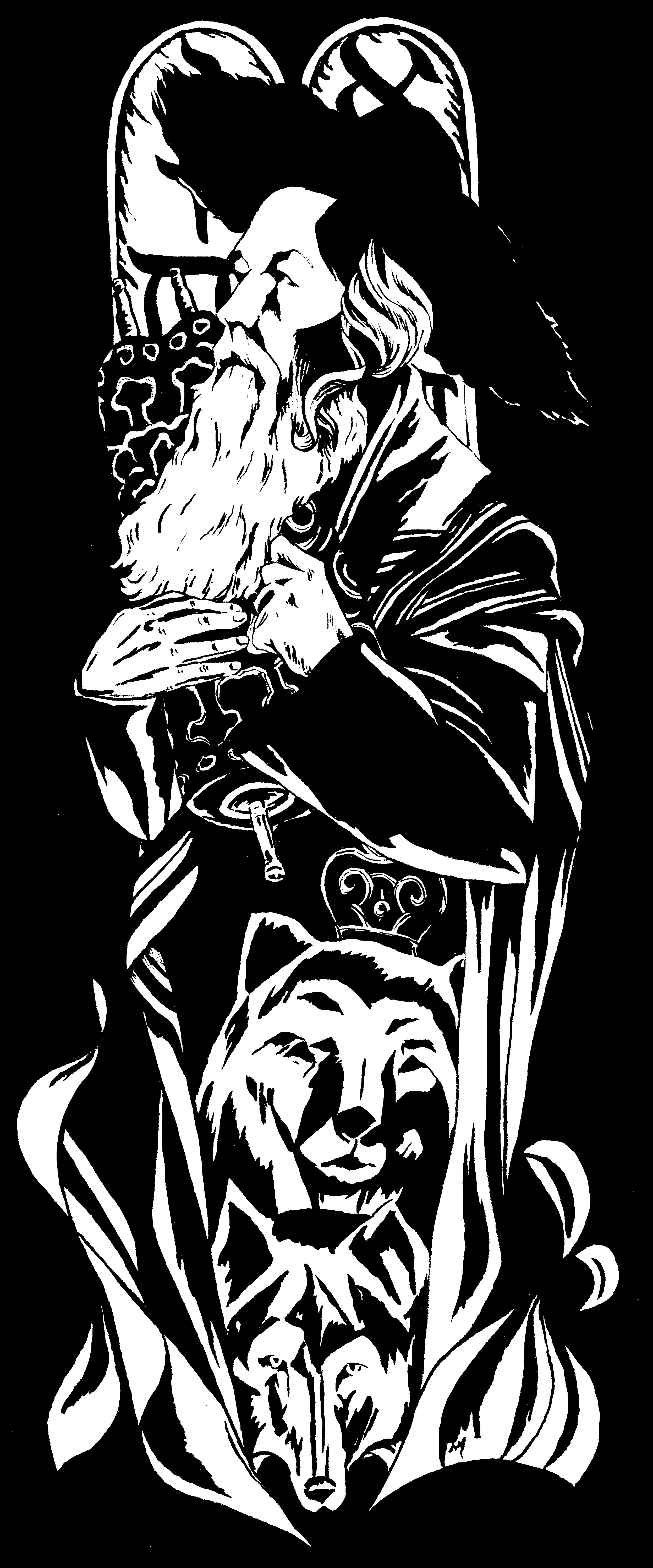

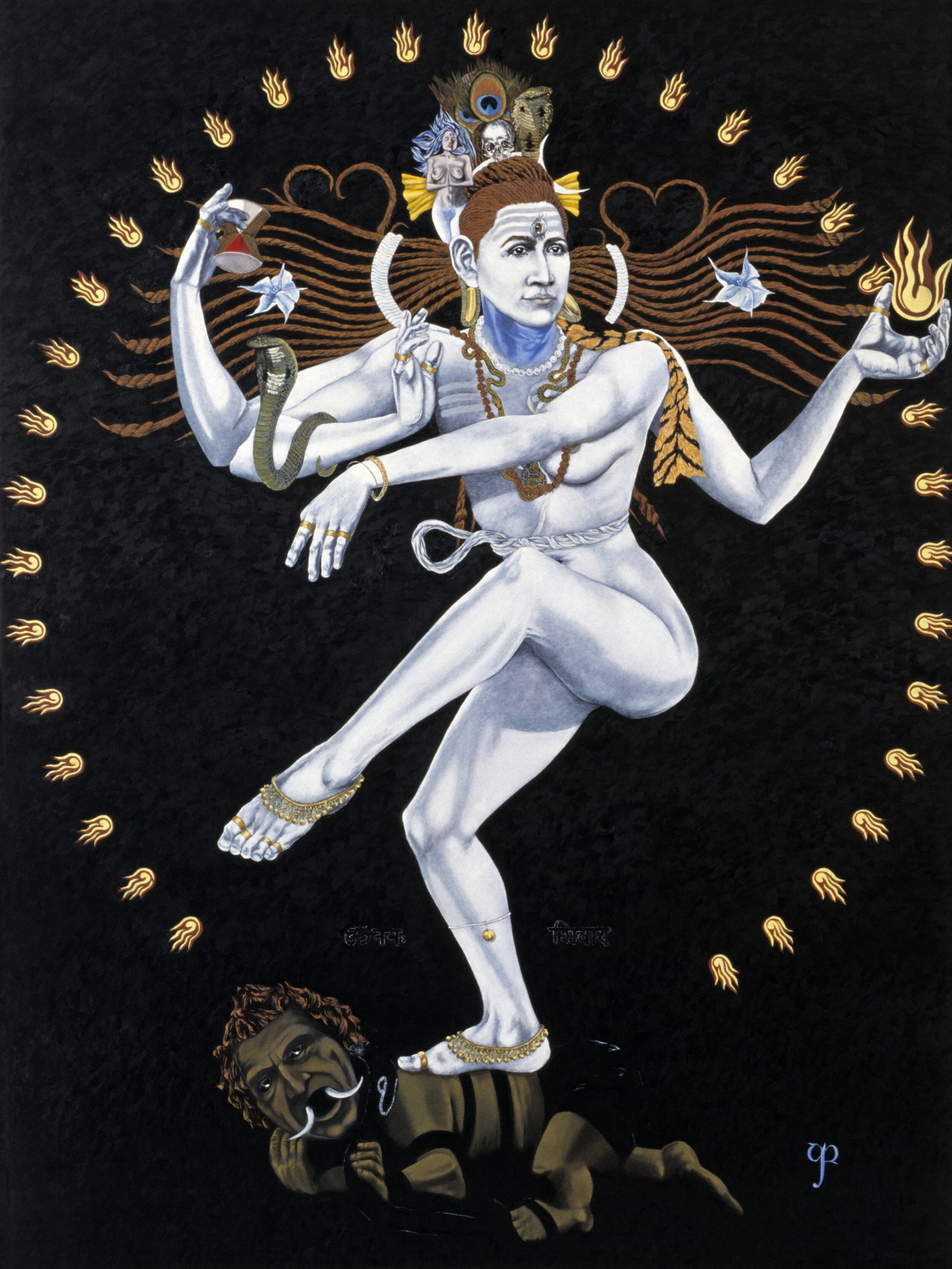
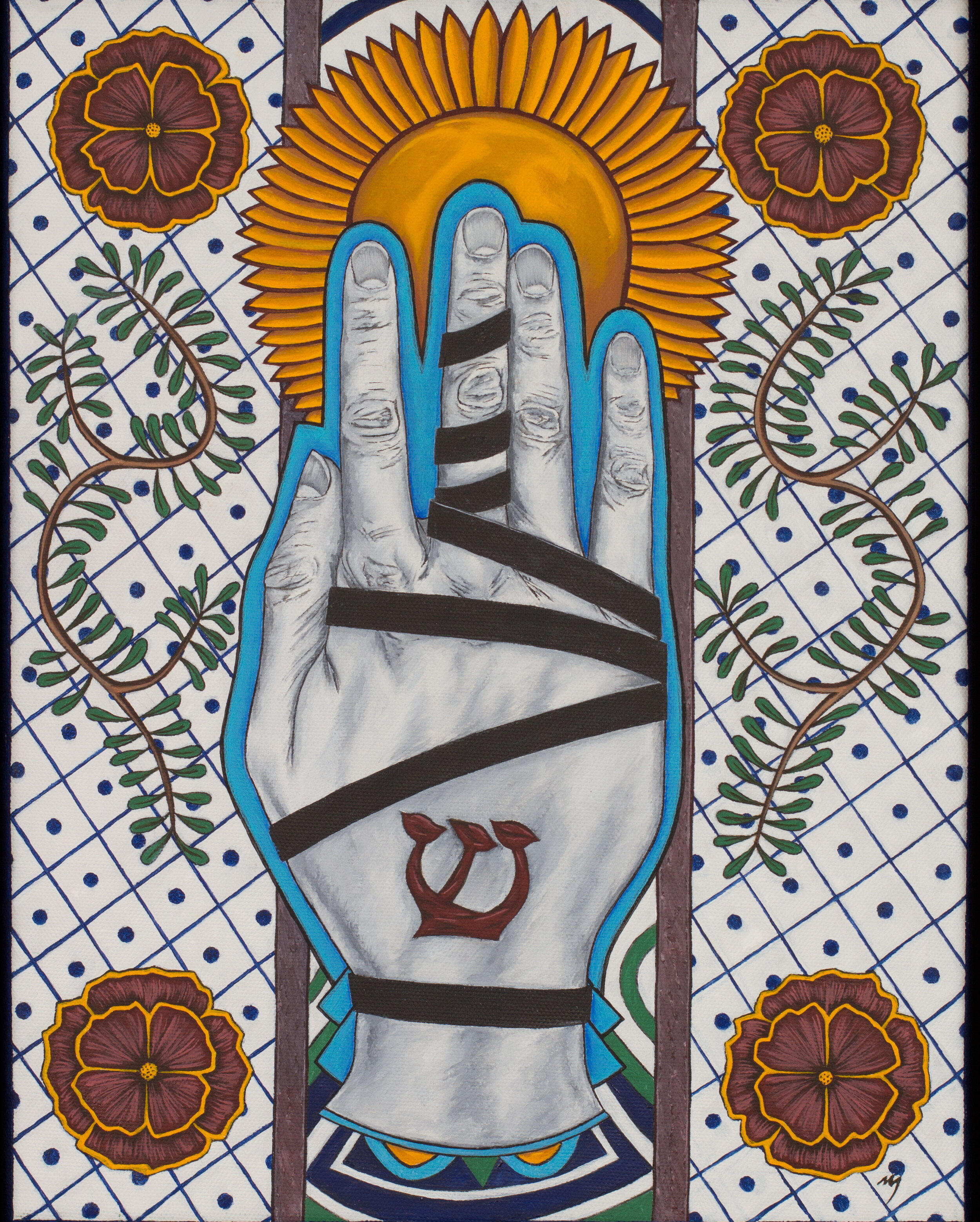
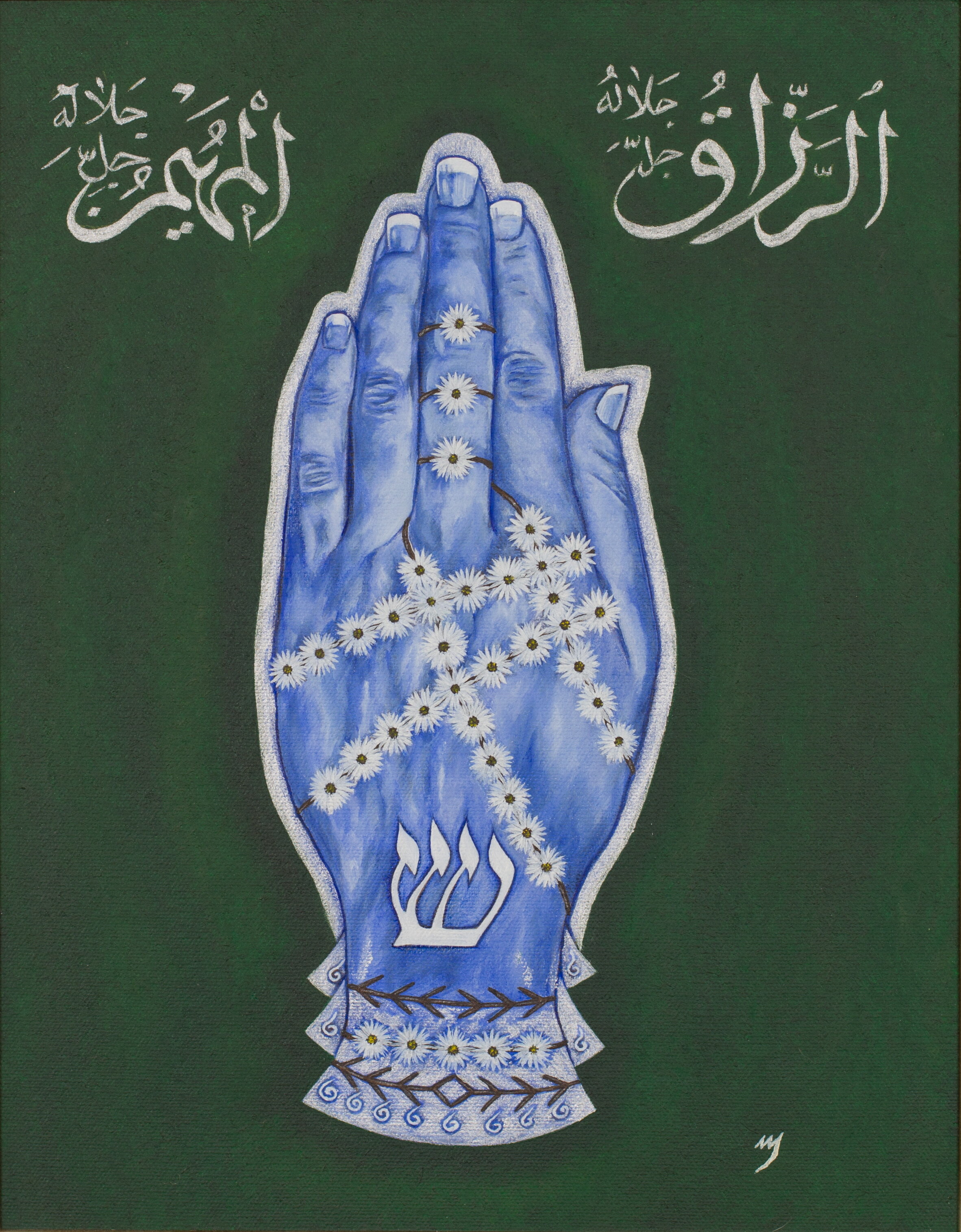
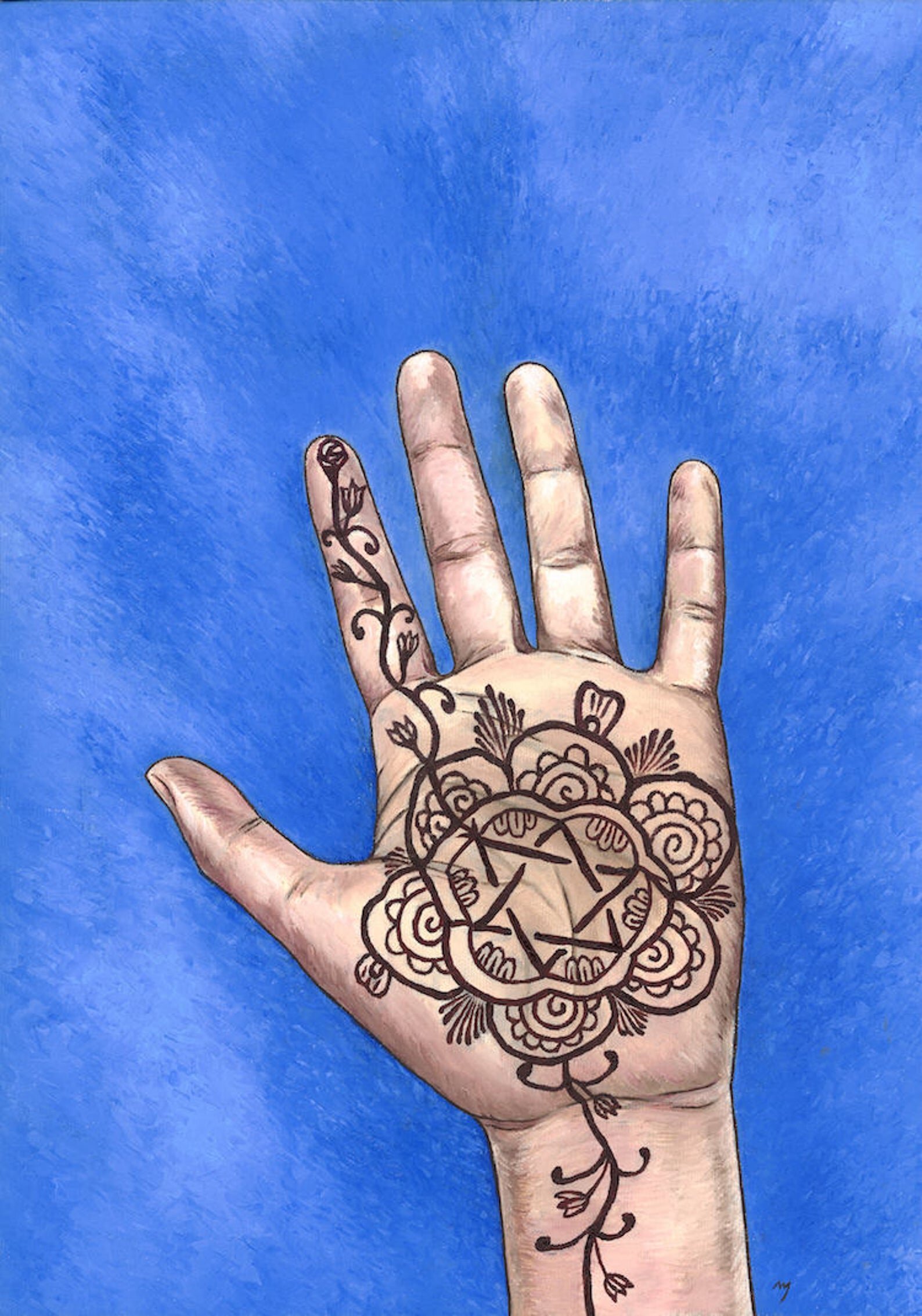

Original oil painting (ca. 2005-06).
A shiviti is a traditional object used by some Jewish practitioners for purposes of meditation. The included Hebrew phrase, transliterated as Shiviti Adonai L’negdi Tamid, means “I place God before me always.”

Original oil painting (ca. 2007).
‘The Damascus Mihrab’ was inspired by an old story told me by my own teacher. In the story, which takes place in Damascus, a Jewish Kabbalist befriends a Muslim Sufi known for being able to discern the future. After they have gotten to know one another and become friends, the Kabbalist says to the Sufi, ‘There is a rumor that you pray for people and predict whether or not they will get well. How do you do it?’ The Sufi replies, ‘This is difficult to answer. To understand, you must purify yourself and do as I do.’
So the Kabbalist follows the Sufi’s example and follows him into the garden behind his house. In the garden is a pond, in the center of which is an island. On that island is a shrine, but there is no way of getting to it except through the water. So the two friends disrobe and swim under the water to the hidden entrance to the shrine. Emerging from the water, they find an outer and an inner chamber. In the outer, they dress in new robes. Then, opening the door to the inner chamber, with eyes closed, they bow down to the floor seven times. After the seventh time, the Sufi squeezes the hand of the Kabbalist as a signal to begin praying for the person who needs his prayers, and then again, to open his eyes and look straight ahead. ‘Then,’ the Sufi told him earlier, ‘you will see whether the person will live or not.’
Doing all of this, the Kabbalist was afraid the whole time that he might be bowing down to an idol, which is absolutely forbidden in Judaism. But he trusted his friend and did as he was told. When he opened his eyes, he saw in front of him the holy name of God, and a light shone from it!
Later the Kabbalist, who was also a famous rabbi, called together all the Jews of Damascus and said: ‘I want you all to know that this Muslim is a holy man who has built a shrine to house God’s holy name, and only goes there only in great awe. All of you say God’s holy name so often that you have forgotten to ’ feel awe in the presence of the divine name! We all have something to learn from this Muslim Sufi!’

Original India ink painting (ca. 2011).
Created as a frontispiece for the book, “A Hidden Light: Stories and Teachings of the Early HaBaD and Bratzlav Hasidism” (on the Shneur Zalman of Liadi and Nahman of Bratzlav) by Zalman Schachter-Shalomi and Netanel Miles-Yépez.

Original India ink painting (ca. 2009).
Created as a frontispiece for the book, A Heart Afire: Stories and Teachings of the Early Hasidic Masters (on the Ba'al shem Tov, the Maggid of Mezritch, and Elimelekh of Lizhensk) by Zalman Schachter-Shalomi and Netanel Miles-Yépez.

Original oil painting (ca. 2008).
This painting is of the Five Elements, as understood in Inayati Sufism. Depicted in the form of a meditator, it is based upon a tantric diagram of the Five Elements (mahabhutas): Square (Ochre) Earth, Round (Green) Water, Triangular (Red) Fire, Crescent (Blue) Air, and (White) Ether.

Original oil painting (ca. 1997-99).
The painting is of Paramashiva Nataraja in Ananda-tandava (Supreme Shiva, Lord of the Dance in the Dance of Bliss). The Lord of the Dance is the expression of the five divine activities: creation, preservation, destruction, concealing, and revealing. As Ananda Coomaraswamy points out in his classic essay, “The Dance of Shiva,” the essential significance of Shiva’s dancing image is threefold. First, it is the image of divinity’s rhythmic play, the source of all movement in the cosmos (itself represented by the aureole of flames around the image). Second, the purpose of the dance is to release the souls of humanity from the snare of cosmic illusion. Third, the place of the dance—Chidambaram—is one’s own heart, the very center of universe.

Original oil painting (2010).
‘La Mano de los Judios’ depicts a white hand, ornamented with the Hebrew letter Shin, wrapped in black t’fillin straps on a Mexican Talavera background. From one perspective, the painting is a statement about my own strangely blended identity: the hand being mine, the black straps being part of the leather t’fillin (prayer adjuncts) worn by traditional Jews (but wrapped in the fashion of Hasidic Jews), and placed in a Mexican context. For, although I was born into a Mexican-American family, I learned in my late teens that my ancestors may also have been Crypto-Jews (Jews forced to convert to Christianity during the Spanish Inquisition, and who thereafter, kept their Judaism secret) which led me to explore Judaism seriously, and eventually to become the student of a famous teacher of the Hasidic tradition of Judaism.
But I also wished to make a kind of ‘Jewish khamsa.’ The Arabic word khamsa means ‘five,’ referring to the five fingers of the hand, and is an ancient and extremely popular hand-shaped symbol of protection in the Middle East and Mediterranean among Muslims, Christians and Jews. The symbol itself predates all of these traditions and probably relates to the basic symbolism of the open hand as a sign of assurance and protection, as in the abhaya mudra of Hinduism and Buddhism, meaning, ‘be not afraid.’ Thus, it is often used on amulets to ward off the ‘evil eye.’ I somehow saw it as related to the Jewish mezuzah (an object containing the Sh’ma’, hung by Jews on their doorposts), which is usually decorated with the Hebrew letter Shin for Shaddai, a name of God that assures us that ‘God is enough,’ or ‘sufficient to take care of our needs.’ Likewise, the straps of the t’fillin are also arranged to suggest this same letter Shin.

Original oil painting (2009).
Written in Arabic are ar-Razzaq, 'the provider’ (on the right) and al-Muhaymin, 'the protector' (on the left).

Original oil painting (2015).
This painting was used on the cover of my book, “My Love Stands Behind a Wall: A Translation of the Song of Songs and Other Poems.”